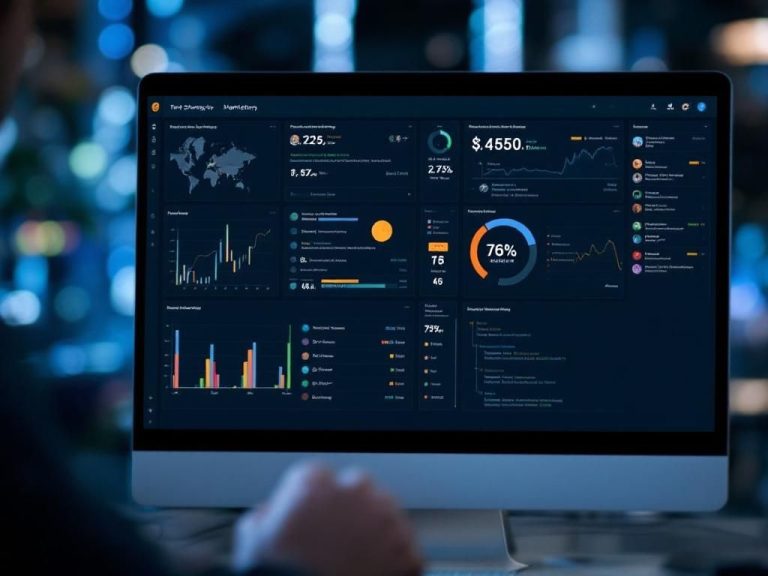In today’s fast-paced digital landscape, machine learning (ML) has become a cornerstone of innovation across various industries. Enterprises leverage ML models to gain insights, improve decision-making, and automate processes. However, the deployment of these models is only the beginning of their lifecycle. Continuous monitoring of these models is crucial to ensure their effectiveness, reliability, and alignment with business goals. This article delves into the significance of monitoring machine learning models, the challenges involved, and best practices to implement an effective monitoring strategy.
The Importance of Monitoring Machine Learning Models
As organizations increasingly adopt machine learning, the necessity for robust monitoring frameworks has become apparent. Here are some compelling reasons why enterprises should invest in ML model monitoring:
- Performance Degradation: Over time, machine learning models can experience performance degradation due to changes in data patterns or an evolving business landscape.
- Data Drift: New data can differ significantly from the data used to train the model, leading to decreased accuracy and potentially harmful business decisions.
- Regulatory Compliance: Many industries are subject to strict regulations regarding data usage and algorithmic decision-making, necessitating ongoing monitoring to ensure compliance.
- Stakeholder Trust: Continuous monitoring builds trust among stakeholders by demonstrating that models are functioning as intended and delivering reliable results.
- Cost Efficiency: Detecting issues early through monitoring can save enterprises substantial costs associated with incorrect predictions or business decisions.
Challenges in Monitoring Machine Learning Models
Despite its importance, monitoring machine learning models comes with its own set of challenges. Understanding these challenges is the first step towards creating a comprehensive monitoring strategy.
Data Quality Issues
The quality of input data is paramount for the performance of ML models. Issues such as missing values, noise, and inconsistencies can affect model predictions.
Complexity of Models
As machine learning models become more complex (e.g. deep learning models), understanding their behavior and diagnosing issues can be challenging.
Resource Constraints
Many enterprises lack the necessary resources (both human and technological) to implement comprehensive monitoring solutions.
Static vs. Dynamic Environments
ML models may perform well in controlled environments, but once deployed in dynamic settings, they may face challenges due to fluctuating data distributions.
Key Metrics for Monitoring ML Models
To effectively monitor machine learning models, organizations must track specific performance metrics. Here are some key metrics to consider:
| Metric | Description | Importance |
|———————|—————————————————|———————————————-|
| Accuracy | Percentage of correct predictions | Indicates overall model performance |
| Precision | Ratio of true positives to total predicted positives | Measures relevance of positive predictions |
| Recall | Ratio of true positives to actual positives | Indicates sensitivity of the model |
| F1 Score | Harmonic mean of precision and recall | Balances false positives and negatives |
| AUC-ROC | Area under the receiver operating characteristic curve | Evaluates model’s ability to distinguish classes |
| Latency | Time taken to make predictions | Vital for real-time applications |
| Resource Utilization | Monitors CPU and memory usage | Ensures optimal performance and efficiency |
Best Practices for Effective Model Monitoring
With the challenges and metrics in mind, here are some best practices for monitoring machine learning models effectively:
1. Establish Clear Objectives
Before implementing a monitoring strategy, define clear objectives aligned with business goals. This ensures that monitoring efforts are focused and relevant.
2. Implement Automated Monitoring Tools
Utilize automated tools and frameworks for real-time monitoring. This helps in quickly identifying issues without overwhelming manual processes.
3. Leverage Version Control
Maintain version control for models and datasets to track changes over time. This enables easier comparisons and regression analysis when issues arise.
4. Perform Regular Audits
Conduct regular audits of both data and model performance. This proactive approach allows for timely adjustments to be made before issues escalate.
5. Collaborate Across Teams
Ensure collaboration between data scientists, engineers, and business stakeholders. A multidisciplinary team provides diverse insights and fosters a culture of accountability.
Future Trends in Model Monitoring
As machine learning continues to evolve, so too will the methods and technologies used for monitoring models. Here are some anticipated trends:
- Increased Use of AI for Monitoring: Utilizing AI technologies to automate and enhance the monitoring process will become more prevalent, allowing for smarter anomaly detection.
- More Focus on Explainability: As transparency becomes critical, enterprises will prioritize explainable AI to understand model decisions better.
- Integration with Business Intelligence Tools: Monitoring tools will increasingly integrate with BI platforms, providing real-time insights into the business impact of ML models.
- Real-Time Data Validation: Developments in data validation techniques will ensure that only high-quality data is fed into models.
Conclusion
In conclusion, the need for machine learning model monitoring is undeniable in an enterprise environment. By understanding the importance, challenges, and best practices associated with model monitoring, organizations can significantly enhance their machine learning initiatives. Implementing a robust monitoring strategy not only safeguards the performance of ML models but also drives sustained business value, ensuring that enterprises remain competitive in an ever-evolving landscape.
FAQ
Why do enterprises need machine learning model monitoring?
Enterprises need machine learning model monitoring to ensure the performance, accuracy, and reliability of their models over time. Continuous monitoring helps detect data drift, identify performance degradation, and maintain compliance with industry regulations.
What are the benefits of monitoring machine learning models?
The benefits of monitoring machine learning models include improved decision-making, timely identification of issues, enhanced model performance, and the ability to adapt to changing data environments, ultimately leading to better business outcomes.
How does machine learning model monitoring improve business outcomes?
Machine learning model monitoring improves business outcomes by ensuring that models produce accurate predictions, reducing the risks of incorrect data interpretations, and facilitating quicker responses to market changes, enhancing overall operational efficiency.
What metrics should be tracked in machine learning model monitoring?
Key metrics to track in machine learning model monitoring include accuracy, precision, recall, F1 score, ROC-AUC, and data input distributions. Monitoring these metrics helps in understanding model performance and identifying when retraining is necessary.
What challenges do enterprises face in machine learning model monitoring?
Enterprises face challenges such as handling large volumes of data, ensuring real-time monitoring, integrating monitoring tools with existing infrastructures, and maintaining the accuracy of models in dynamic environments. Addressing these challenges is crucial for effective model management.
How often should machine learning models be monitored?
Machine learning models should be monitored continuously or at regular intervals, depending on the application and data volatility. Frequent monitoring allows for quicker responses to anomalies and ensures that models remain relevant and effective.




